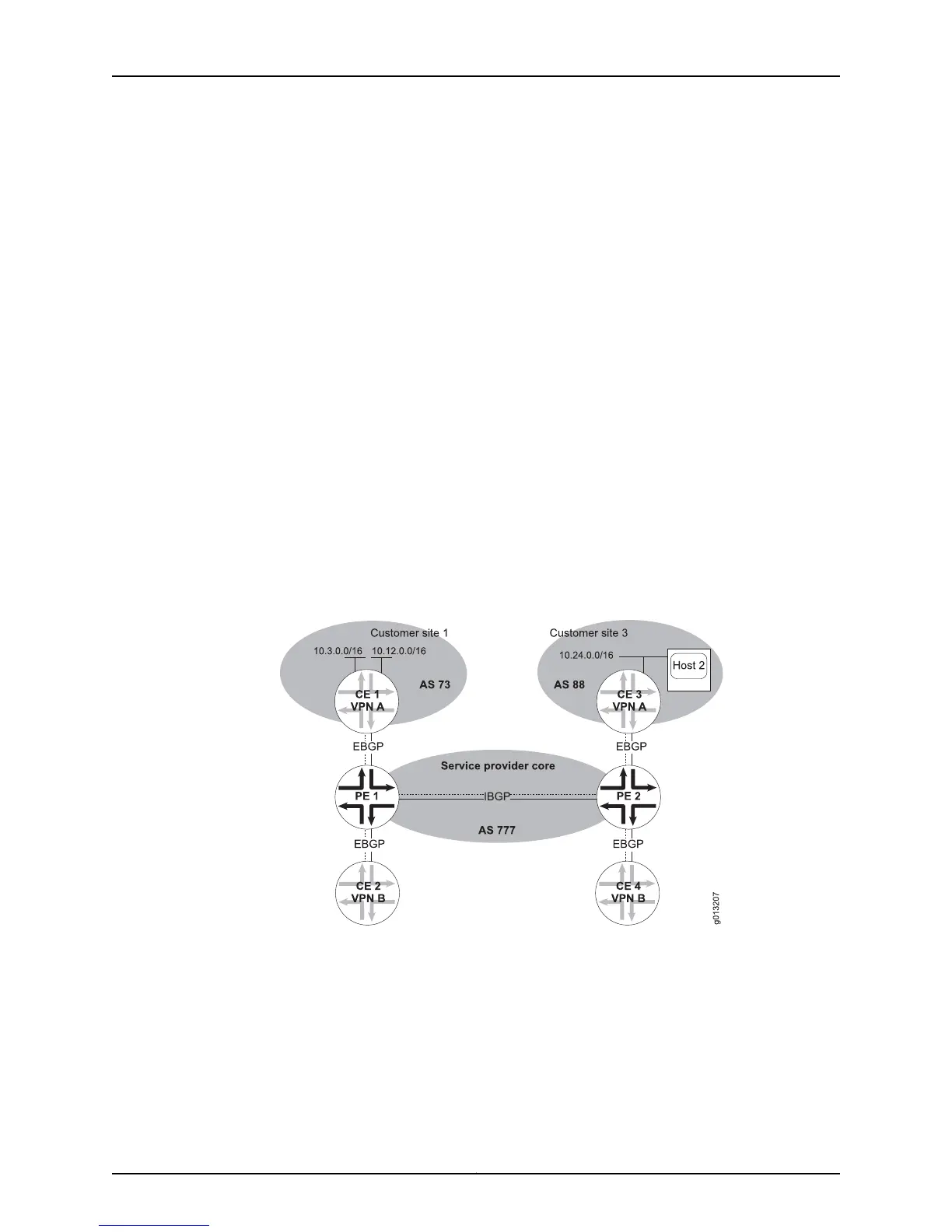A route-target import list is applied before any inbound routing policy (route map) is
applied. If an inbound route map contains a set extcommunity clause, the clause replaces
all extended communities in the received route. BGP applies the default route-target
export list associated with the VRF if the route does not have any route-target
extended-community attributes after the inbound policy has been applied. On the other
hand, the default export list is not applied if either a valid route-target export list is received
or the inbound route map sets one or more route targets.
Distribution of Routes and Labels with BGP
The extensions to BGP include enhancements to update messages that enable them to
carry the route distinguishers, route-target extended-community information, and MPLS
labels required for BGP/MPLS VPNs.
Consider the simple example shown in Figure 71 on page 390. The customer edge devices
are connected with their associated provider edge routers by external BGP sessions
(CE 1–PE 1 and CE 3–PE 2). PE 1 and PE 2 are BGP peers by an internal BGP session across
the service provider core in AS 777.
In this example, the PE routers run EBGP to the CE routers to do the following:
•
Learn the prefixes of the networks in the local customer site.
•
Advertise routes to networks and remote customer sites.
Figure 71: Route and Label Distribution
Rather than running EBGP between the PE routers and the CE routers, you can do either
of the following:
•
Run an IGP (such as IS-IS, OSPF, or RIP) between the CE router and the PE router.
•
Configure static routes on the CE and PE routers (on the CE router this would typically
be a default route).
Copyright © 2010, Juniper Networks, Inc.390
JunosE 11.2.x BGP and MPLS Configuration Guide

